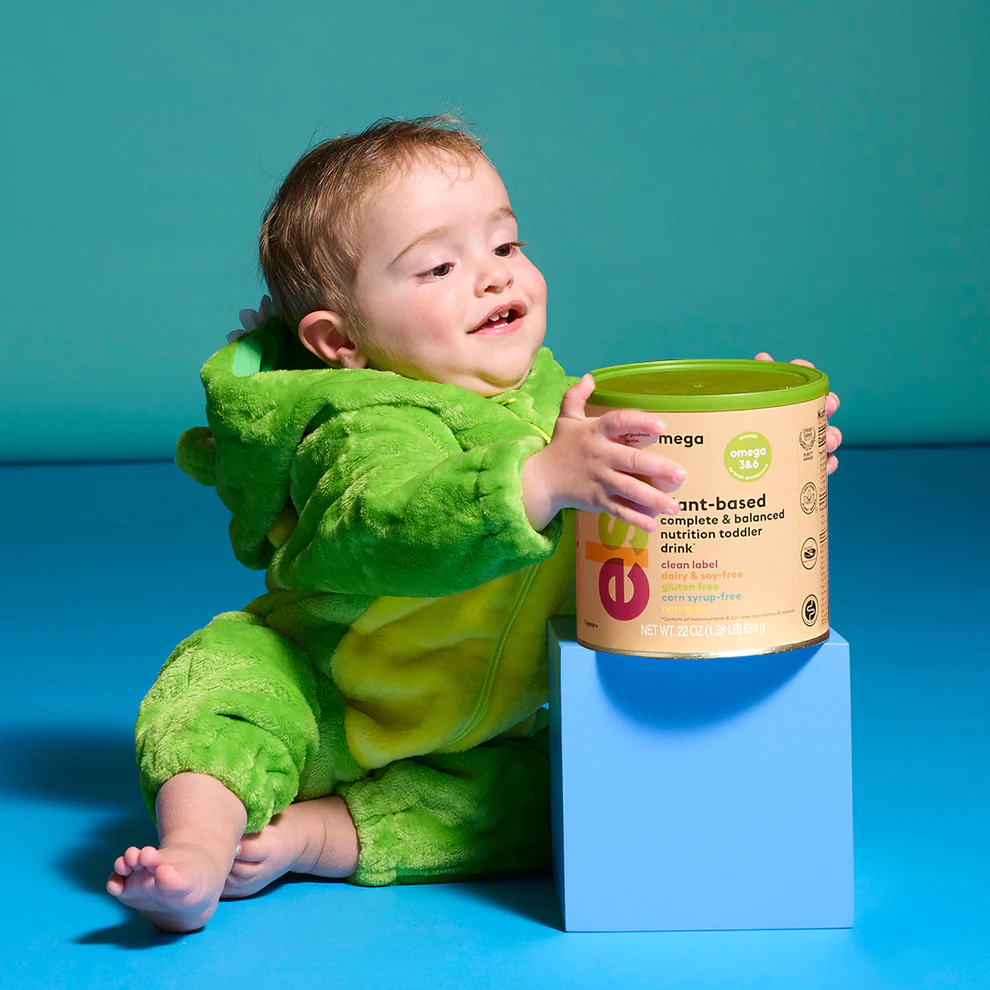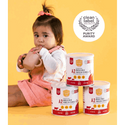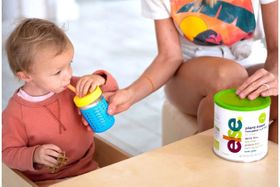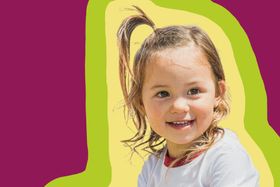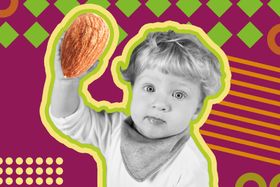Powdered vs. Ready-to-Feed Formula: Which Is Best for Your Infant?
A guide to choosing the best formula for your baby. Weigh the pros and cons of powdered and ready-to-feed options, addressing cost, convenience, and nutritional factors.
Updated August 26, 2024

As a new parent, deciding between powdered and ready-to-feed formula can be confusing. There are so many brands and options to choose from, and you want the best for your baby.
Below, we'll help you understand the differences between the two types of toddler formula. By the end, you'll be ready to make a good choice for your little one.
» Looking for a cheaper alternative to RTF? Try powdered formula
Liquid vs. Powder Formula: Nutritional Content
Most formulas you find—powdered or ready-to-feed (RTF)—are nutritionally similar. Both promote your little one's overall health and growth. The best brands have the right mix of macronutrients like protein, carbs, fat, vitamins, and minerals.
Some brands even go further by adding prebiotics and probiotics for easier digestion. Others add omega 3 and 6 fats to boost your kid's cognition
» Check out our guide to nutrient deficiencies
Never Worry About Sugar in Your Little One's Formula
Sugar is the most pressing problem in toddler formulas nowadays. Experts say it leads to early obesity and may cause issues with cholesterol later on. [1] On top of that, the AAP says 90% of toddler formulas out there have way too much sugar for your little one to handle. [2]
So how do you help your kid gain a healthy weight without these risks—even if they are picky?
With that one question in mind, we have formulated Else's Toddler Omega Powdered Formula. It's free from corn syrup, meaning it doesn't spike your little one's blood sugar levels. You won't have to browse all the Reddit threads for hours on end looking for the healthiest option for your child.
Don't be fooled by sugar-free claims alone. Many formulas on the market are the result of heavy processing. You have to look at the ingredients list at the back, and you waste time checking if it's safe.
With Else, you don't because it's:
- Clean Label Project certified
- USDA Organic and made with 80% whole food ingredients
- Free from corn syrup, flavorings, and GMOs
- Dairy-, gluten-, and soy-free for little ones with allergies
Is Liquid Formula Easier to Digest Than Powder?
Many formulas will offer different sources of carbohydrates and protein. There shouldn’t be a difference between powdered and RTF because they’re so similar nutritionally.
Its size, on the other hand, might be different based on the brand. Why does it matter? Because some mothers say that they feel RTs is easier for their baby to digest.
You should also be mindful of allergens in these products. You might consider a plant-based or soy-free alternative if your kid has allergies or is lactose intolerant.
» Check out the best alternatives to Nutramigen for gentle digestion
Liquid vs. Powder Formula: Preparation
When preparing powdered formula, always follow package instructions. Generally, you'll have to mix it with either water, milk, or breastmilk. It depends on what your pediatrician suggests.
The process takes a while, which can be too long, especially if you're holding a crying baby. RTF is easier and quicker to prepare. All you need to do is pour it into a warm bottle and serve.
» Learn how to transition your baby to formula
Is Liquid Formula Safer for Storage Than Powder?
RTF Formula:
- Refrigeration: Once opened, the RTF formula should be refrigerated immediately.
- Time Limit: Never feed RTF that has been sitting out at room temperature for more than 2 hours.
Powdered Formula:
- Time Limit: Once mixed, powdered formula should be fed immediately.
- Refrigeration: Leftovers should be refrigerated as soon as possible.
» Check out the difference between toddler and infant formula
Storage:
- Unopened: Both RTF and powdered formula should be stored in a cool, dry place like the pantry.
- Opened: Powdered formula can remain in the pantry, but RTF must be refrigerated.
Note: Always consult the specific instructions on the formula packaging for the most accurate information.
» Check out how one of our nutritionists found the healthiest baby formula
Liquid vs. Powder Formula: Cost and Convenience
RTF formulas are more expensive. The cost adds up if you're looking to use them long-term. You should get it if you're not really concerned about the price and want to speed up those middle-of-the-night feedings.
On the other hand, the powdered formula fits more servings and tends to be cheaper, so it might be the better choice if you're on a budget. There's no evidence that RTF is better apart from the convenience, so I'd encourage the powdered version. It's more affordable and has the same composition.
The Best Fit for Your Baby
The best formula for your baby depends on what you need and want. Both powdered and ready-to-feed formulas are good for babies. But they have different pros and cons when it comes to price, how easy they are to use, how healthy they are, and how safe they are.
Talk to your pediatrician about the best choice for your baby. Consider things like your baby's needs, lifestyle, and ingredients. The essential thing is to give your baby a healthy and safe formula that helps them grow and develop.
» Help your kid grow with a whole-food powder formula
References:
- R. E. Morgan, “Does consumption of high‐fructose corn syrup beverages cause obesity in children?,” Pediatric Obesity, vol. 8, no. 4, pp. 249–254, Apr. 2013, doi: 10.1111/j.2047-6310.2013.00173.x. Available: https://pubmed.ncbi.nlm.nih.gov/23630060/
- “Older Infant-Young Child ‘Formulas.’” Available: https://publications.aap.org/pediatrics/article/152/5/e2023064050/194469/Older-Infant-Young-Child-Formulas?autologincheck=redirected
FAQs
What age do you switch to powdered formula?
You can generally switch your baby to powdered formula around 2 months old. This is when their immune system is stronger, and they can better handle the preparation process. Always consult your pediatrician for personalized advice, especially if your baby has specific health concerns.
What kind of water is the best for powdered formula?
Pure, filtered water is the best choice for powdered formula. Avoid using tap water, especially if it's known to have high mineral content or contaminants. This will help prevent digestive issues and ensure your baby receives the nutrients they need.
How long does it take for a baby to adjust to powdered formula?
It typically takes a few days for a baby to adjust to powdered formula. Some babies may experience temporary digestive issues like gas or constipation during the transition. If these problems persist, consult your pediatrician.
Does powder formula cause diarrhea?
While the powdered formula itself doesn't directly cause diarrhea, it can contribute to digestive issues if not prepared correctly. Incorrect water temperature, over-dilution, or the introduction of new formula types can lead to diarrhea. Always follow the instructions on the formula and consult your pediatrician for personalized advice.
Can I switch my little one's formula cold turkey?
It's generally not recommended to switch formula cold turkey. Sudden changes can upset your baby's digestive system and lead to discomfort. Gradually introduce the new formula over a few days, mixing it with the old formula in increasing proportions. This will give your baby's body time to adjust.
Disclaimer: The content and advice provided in this article is for informational purposes only and is not a substitute for medical diagnosis, treatment, or advice for specific medical conditions. Always consult a pediatrician to understand your baby's needs.





